In the realm of woodworking, the selection of materials critically influences the outcome of lathe turning projects. Identifying the best woods for lathe turning involves understanding the unique properties of various wood species, including grain structure, density, and moisture content. Hardwoods like oak and maple offer durability and intricate grain patterns, while softer woods such as pine and cedar provide ease of manipulation and a lighter weight.
Each wood possesses distinct characteristics that can enhance or hinder the turning process, influencing both aesthetic appeal and structural integrity. To uncover the most suitable options for your lathe turning endeavors, read on.
Discover The Best Woods For Lathe Turning Projects
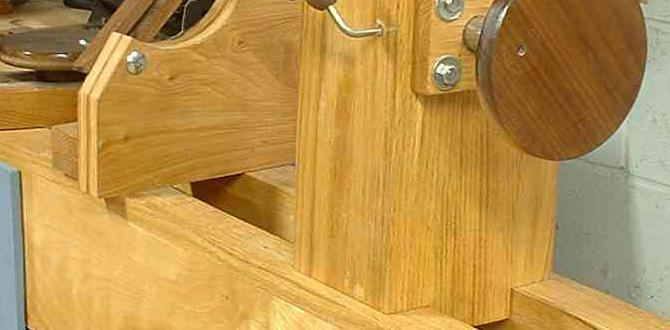
Understanding Lathe Turning
Definition and process of lathe turning. Importance of wood selection in lathe projects.
Lathe turning is like magic, where wood spins and transforms into beautiful shapes! A lathe is a machine that holds and rotates wood while tools carve it into creations like bowls, pens, and furniture parts. Choosing the right wood is crucial, too. Some woods dance with the lathe, while others are stubborn and uncooperative.
Remember, pick a wood that’s happy to play! Let’s take a peek at why selection matters with this handy table:
| Wood Type | Characteristics |
|---|---|
| Birch | Soft and easy to work with, great for beginners! |
| Cherry | Beautiful color, cute after sanding! |
| Hard Maple | Can be tough, but the results shine! |
Characteristics of Ideal Turning Woods
Density and hardness. Grain pattern and stability. Workability and finish quality.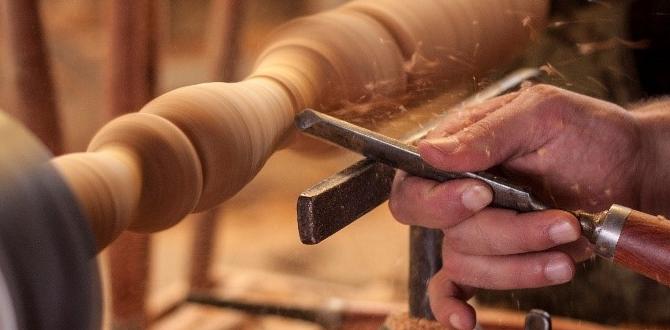
Choosing the right wood for lathe turning is essential. Here are some key traits of ideal turning woods:
- Density and hardness: The wood should have a good balance of density and hardness, allowing it to withstand the cutting tools while being easy to shape.
- Grain pattern and stability: A smooth, attractive grain helps create beautiful finishes. Stability prevents cracking and warping during the turning process.
- Workability and finish quality: Woods that are easy to work with lead to better results. Smooth finishes enhance the appearance and durability of the final product.
Top Softwoods for Lathe Turning
Pine: Benefits and limitations. Cedar: Unique properties and uses. Fir: Availability and turning capabilities.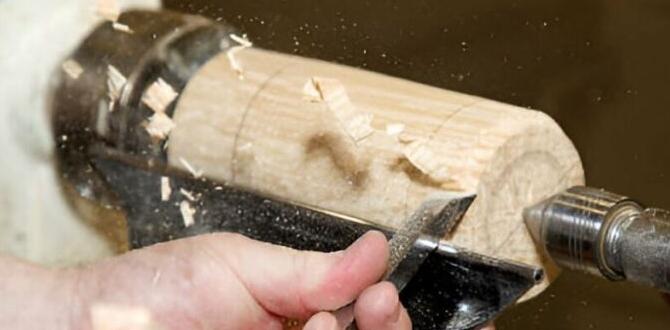
Pine is a favorite among woodturners. It’s soft and easy to shape, making it great for beginners. But watch out—its knots can be tricky, almost like a game of hide and seek!
Cedar stands out for its lovely aroma and resistance to decay. Who doesn’t want a wood that smells great and fights off bugs? It’s perfect for outdoor projects, but be careful—its softness means it can dent easily.
Fir is another top choice.
It’s widely available and offers nice turning capabilities. Plus, it has a straight grain, which is helpful for smooth finishes. Turning fir is like skating on ice—super smooth!
| Wood Type | Benefits | Limitations |
|---|---|---|
| Pine | Easy to shape | Knotty surprises |
| Cedar | Great smell, bug resistant | Soft, can dent |
| Fir | Widely available, straight grain | None significant |
Top Hardwoods for Lathe Turning
Maple: Versatility and appeal. Walnut: Aesthetic qualities and durability. Oak: Strength and finishing potential.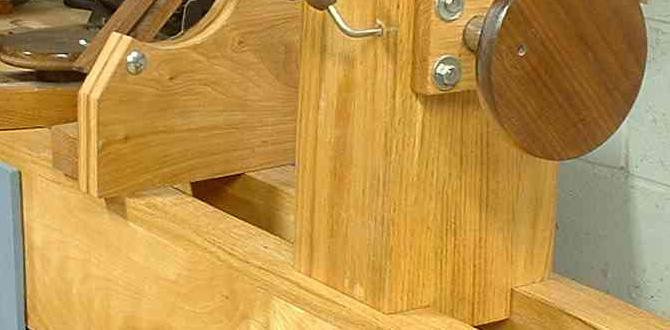
Looking for the best woods for lathe turning? Check out these top hardwoods! Maple is a superstar.
Its versatility makes it easy to work with, and it can take stains like a champ. Walnut, on the other hand, is all about style. Its rich color and grain are like wearing a fancy tuxedo. Lastly, Oak is the strongman of hardwoods.
It holds up well and finishes beautifully. Just be careful; you might make a wooden masterpiece!
| Wood Type | Key Features |
|---|---|
| Maple | Versatile, good for stains |
| Walnut | Aesthetic, durable |
| Oak | Strong, excellent finish |
Exotic Woods for Advanced Turners
Teak: Water resistance and longevity. Mahogany: Color and workability. Purpleheart: Unique coloration and hardness.
For advanced turners, exotic woods offer a delightful challenge. Take Teak, for instance; it’s like the superhero of wood, boasting water resistance and incredible longevity. No need for a raincoat here!
Then there’s Mahogany, which brightens up projects with its rich color and smooth workability—like spreading warm butter on toast. Finally, Purpleheart stands out with its eye-catching hue and hardness. It’s the wood version of a peacock strutting its stuff!
| Wood Type | Benefits |
|---|---|
| Teak | Water resistant and long-lasting |
| Mahogany | Rich color and easy to work with |
| Purpleheart | Unique color and very hard |
Environmental Considerations
Sustainable sourcing of woods. Impact of deforestation on wood availability.
Sourcing wood responsibly helps protect our forests and the environment. It is vital to choose wood from sustainable sources. This means the trees are cut down in a way that allows forests to grow back. Deforestation can harm wildlife and reduce the amount of wood available for the future.
Here are key points to consider:
- Sustainable sourcing ensures we don’t run out of trees.
- Deforestation can lead to climate change and loss of habitats.
- Choosing recycled or reclaimed wood helps lessen the impact.
By making smart choices, we can enjoy beautiful wood while helping the planet.
Tools and Techniques for Wood Turning
Essential tools for lathe turning. Best practices for different wood types.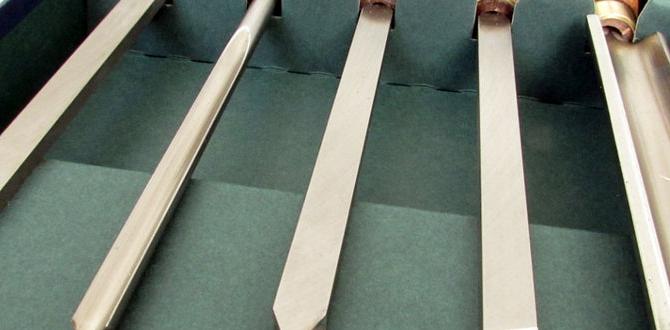
Lathe turning can be a fun adventure. To get started, you’ll need some essential tools. Think of a lathe, chisels, and a good face shield to protect those peepers! Chisels are like magic wands; they shape and smooth the wood into stunning pieces.
Different woods require different techniques. For softer woods, go easy like a gentle breeze. But with harder woods, apply a bit more elbow grease!
Here’s a quick glance at the tools and practices:
| Wood Type | Best Tool | Technique |
|---|---|---|
| Softwoods | Gouge | Light pressure |
| Hardwoods | Skew Chisel | Firm grip |
| Exotic Woods | Parting Tool | Slow and steady |
Now, grab those tools and let the wood chips fly—safely, of course!
Maintenance and Care for Turned Wood Projects
Finishing techniques to enhance wood’s longevity. Proper storage and care tips for turned items.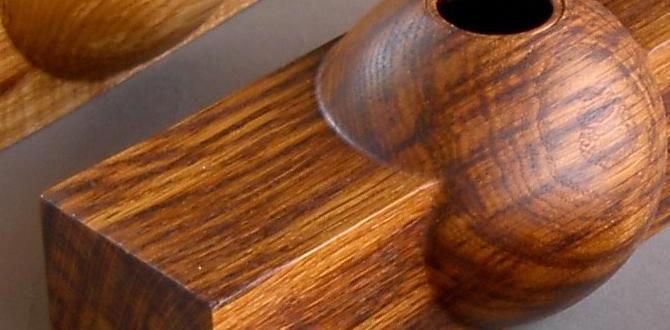
Turning wood isn’t just about shaping it; it’s also about keeping it looking sharp for years to come! One way to enhance its longevity is by using finishing techniques. Oils, waxes, and varnishes create a protective layer that keeps the wood from drying out.
Remember, nobody likes a dried-out piece of wood!
Storing your turned treasures is equally important. Keep them in a cool, dry place to prevent warping. Use a soft cloth to wipe away dust—think of it as giving your wooden buddies a spa day!
A little love goes a long way in preserving their beauty.
| Care Tips | Finishing Techniques |
|---|---|
| Store in a cool, dry place | Apply oils for moisture |
| Wipe with a soft cloth | Use wax for shine |
Conclusion
In conclusion, selecting the best woods for lathe turning significantly impacts the quality and aesthetics of your projects. Hardwoods like maple, cherry, and walnut offer durability and beautiful grain patterns, while softwoods such as pine and cedar are excellent for beginners. Ultimately, experiencing various woods will enhance your turning skills and expand your creative possibilities.
Happy turning!
FAQs
What Are The Top Hardwoods Recommended For Lathe Turning Projects And Why Are They Preferred?The top hardwoods recommended for lathe turning projects include maple, cherry, walnut, and oak. These woods are preferred due to their fine grain, workability, and ability to achieve a smooth finish. Maple and cherry offer vibrant colors and are less prone to splintering, while walnut provides a rich, dark hue. Oak is valued for its strength and durability, making it ideal for both functional and decorative pieces.
How Does The Density Of Wood Affect Its Performance And Finish When Turning On A Lathe?The density of wood significantly impacts its performance and finish when turning on a lathe. Denser woods tend to be harder, which can lead to smoother finishes but may require sharper tools and more power to cut effectively. Conversely, less dense woods are generally easier to turn but may produce rougher finishes and are more prone to tear-out. Ultimately, the choice of wood density influences the lathe work’s efficiency, the quality of the final product, and the overall turning experience.
Are There Specific Softwoods That Are Suitable For Lathe Turning, And What Are Their Advantages And Disadvantages?Yes, specific softwoods like pine, cedar, and spruce are suitable for lathe turning. Advantages include their availability, ease of cutting, and lightweight nature, which makes them easier to handle and shape. However, they can be less durable and more prone to dents and scratches compared to hardwoods. Additionally, some softwoods may have resin pockets that can cause clogging and affect finishing.
How Do Moisture Content And Wood Seasoning Impact The Lathe Turning Process And The Final Product?Moisture content significantly affects the wood’s workability during the lathe turning process; higher moisture levels can lead to warping and uneven cutting. Proper wood seasoning reduces moisture to optimal levels, enhancing dimensional stability and ensuring a smoother finish. Seasoned wood also minimizes the risk of defects, cracks, and splits, resulting in a more aesthetically pleasing final product. Consequently, the quality of the lathe-turned item is heavily influenced by both moisture content and the effectiveness of the seasoning process.
What Are Some Tips For Selecting The Right Wood For Beginner Lathe Turners To Ensure A Smoother Turning Experience?For beginner lathe turners, it’s best to select softwoods like pine or cedar, as they are easier to work with and less likely to splinter. Look for straight-grained wood with minimal knots or defects to ensure a smoother turn and reduce the risk of tear-out. Avoid dense hardwoods initially, as they can be more challenging to cut and require sharper tools and more experience. Lastly, consider using kiln-dried wood, as it tends to be more stable and easier to turn compared to green wood.
